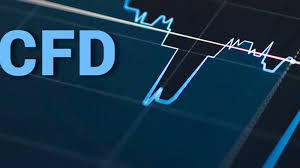cfd trading is a popular form of trading that enables traders to speculate on the rise and fall of prices of various financial markets, including stocks, indices, currencies, and commodities, without owning the underlying assets. CFD stands for contract for difference, which means that traders only have to pay the difference between the opening and closing prices of their trading positions.
CFD trading is a high-risk, high-reward form of trading that requires a deep understanding of various financial instruments, technical analysis, and risk management techniques. In this blog post, we will provide a comprehensive guide to CFD trading for beginners, covering everything from the basics of CFDs to advanced trading strategies.
What are CFDs?
CFDs are financial derivatives that allow traders to speculate on the price movements of various assets, without owning the underlying asset. CFDs are typically leveraged, which means that traders can increase their exposure to the asset with a smaller amount of capital. The profit or loss from a CFD trade is determined by the difference between the opening and closing prices of the trade.
How does CFD trading work?
CFD trading works by opening a position on a particular financial market, based on the trader’s prediction of the price movement of the underlying asset. The trader can choose to go long (buy) if they believe that the price will rise or go short (sell) if they think that the price will fall. The trader has to pay a margin to open the position, which is a percentage of the total value of the trade.
What are the advantages of CFD trading?
CFD trading offers several advantages over traditional investing, including lower transaction costs, leverage, and the ability to profit from both rising and falling markets. CFD trading also allows traders to trade on a wide variety of financial markets, including stocks, indices, currencies, and commodities, without having to own the underlying asset.
What are the risks of CFD trading?
CFD trading is a high-risk, high-reward form of trading that requires a deep understanding of various financial instruments, technical analysis, and risk management techniques. Traders can lose more than their initial investment, and CFD trading involves the risk of margin calls, which can result in forced liquidation of the position. CFD trading is also subject to market volatility, which can lead to rapid losses or gains.
How to get started with CFD trading?
To get started with CFD trading, traders first need to choose a reputable CFD broker and open a trading account. They also need to choose the financial markets they want to trade and develop a trading strategy based on their analysis of the market. It is essential to practice good risk management techniques, such as setting stop-loss orders and limiting the amount of capital invested in each trade.
Conclusion:
CFD trading offers a lot of opportunities for traders to speculate on the price movements of various financial markets, but it is also a high-risk, high-reward form of trading that requires a deep understanding of various financial instruments, technical analysis, and risk management techniques. By following the tips provided in this comprehensive guide to CFD trading for beginners, traders can minimize their risk while maximizing their profits. If you are interested in CFD trading, be sure to do your due diligence, choose a reputable broker, and develop a solid trading strategy based on your analysis of the market. Happy trading!
